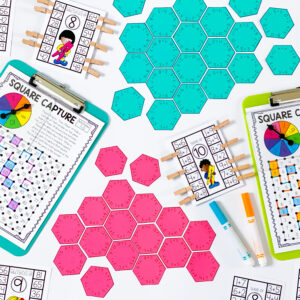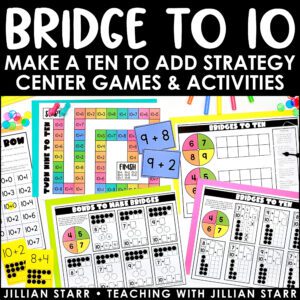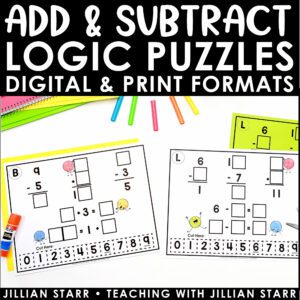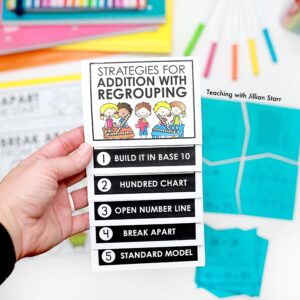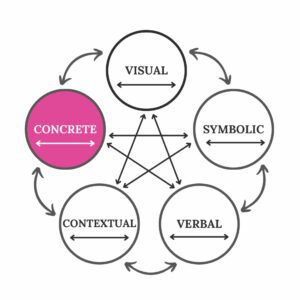
You know the saying, “I need to see it to believe it.” Well, students need to see how and understand why a math strategy works. Therefore best addition strategies draw on a student’s developing number sense and place value. Then, they are able to quickly understand the process and use the strategy over and over, no matter the numbers. The traditional addition algorithm doesn’t fit this pattern.
The traditional algorithm is a formula. Not a strategy. It was designed in the middle ages and made computing addition problems more efficient. It wasn’t designed to deepen–or even utilize– math understanding.
Today, students learn it for rote practice and quick computation– carrying the tens and adding digits because that’s how the steps work. Not because they understand what is happening with the numbers. And in my opinion, students should not be using the standard algorithm before 4th grade.
That’s why this post is different. Unlike my previous posts on addition strategies, such as the compensation strategy, transformation strategy, decomposition strategy, and place value strategy, I’m not going to show what traditional addition algorithms look like in 1st, 2nd, and 3rd grade.
Instead, I’m going to show you all my cards. I’m going to share why I don’t teach it. And what I do to make it more approachable if you must teach it.
Ready? Let’s dive in.
What is the Traditional Addition Algorithm?
The traditional algorithm varies from country to country. It changes depending on where you are in the world.
Today, I’m focusing on how we teach the traditional addition algorithm in the United States. You’re probably already familiar if you learned math in the USA or teach here. However, here’s a refresher, just in case:
Students stack numbers aligned by place value and draw a line underneath. Then, they add each digit column from right to left. For example: 348 + 274.
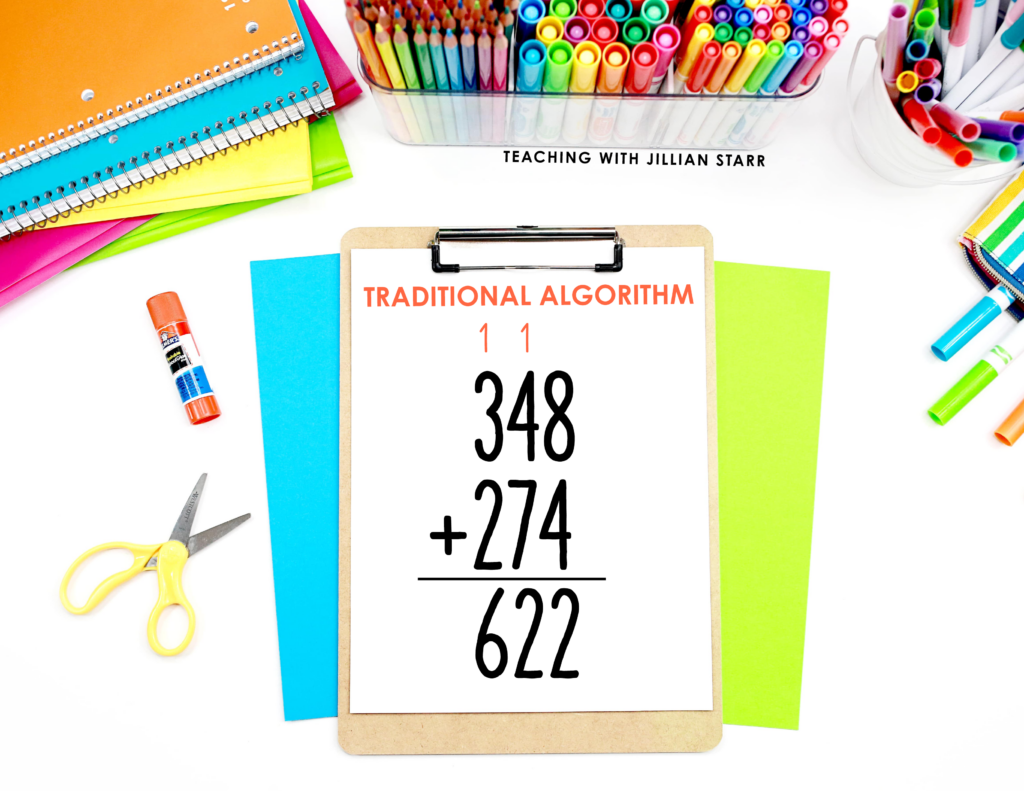
First, they add the ones. In our example, that would be 4 + 8, which makes 12. 12 is one ten and two ones. So, the student writes a 2 below the line in the one’s place and adds a one to the top of the tens column.
Next, they repeat that process in the tens column. Add the digits (4 + 7 = 11) plus 1 from our previous column. So, two goes in the tens place. And, a one goes above the hundreds column.
Finally, students repeat the process once more with the hundreds column. Add the digits (3 + 2 = 5) plus 1. 6 goes in the hundreds place.
The final answer: 622
Why I Don’t Teach the Traditional Addition Algorithm
What did you notice as you read through the traditional addition algorithm process?
Did it feel repetitive? Did you actively think about how you were deconstructing and reconstructing numbers? Did you think about the value of each digit depending on its place within the number?
Here’s my not-so-hot take.
No.
The traditional addition algorithm doesn’t activate number-sense thinking. Instead, it is a repetitive pattern that students learn and apply to numbers.
So what happens when students make a mistake? Quick identification of how to correct a mistake requires a deeper understanding of how numbers work. So, students often get stuck when their use of a formula fails.
Before All Else: Students Need to Build Conceptual Understanding of Addition
Instead, students need to build a conceptual understanding of how addition works before applying a formula to solve addition problems.
How to Teach the Traditional Addition Algorithm
First and foremost: Our state standards don’t require the use of the traditional addition algorithm until 4th grade.
However, it makes its way into the lives of our students in many ways.
I can’t tell you how often I heard my third graders say, “Ms. Starr, my mom taught me a new strategy that is so fast,” only to discover they learned the standard addition algorithm.
The truth is that as mental math strategies grow in popularity, there is more pushback by those in favor of “old math” algorithms. Thus, the teaching of traditional algorithms continues.
- Caregivers teach their kids because they are unfamiliar with alternative, concept-building strategies
- Pressure from other teachers or administrators
So, whether or not we choose to teach algorithms, they make their way into our students’ lives. And, if that happens, there are ways we can support their understanding of why the algorithm works.
Make it Concrete
When teaching the traditional algorithm for addition, we want to find ways to show why the algorithm works. Not just the formula.
Unifix cubes are my favorite math manipulative for teaching the standard algorithm. The standard addition algorithm works by starting in the one’s column and adding up until you make a ten (or hundred, etc.). Students can build the problem with Unifix cubes. Then, as they add up each column, they can add 10, 100, etc. groups to the next place value.
Here’s the catch. Building a problem with Unifix cubes is time intensive. So, I start by returning to double-digit numbers– even though my students might be working through the hundreds.
Note: Place value mats are beneficial for students to keep track of their Unifix cubes as they work.
Final Thoughts
The standard addition algorithm isn’t going away any time soon. While it doesn’t support student understanding of math concepts, it makes computation much more efficient.
But that doesn’t mean we need to emphasize it as the ultimate strategy or teach it the same way it has been taught for, well, centuries. Instead, we can continue to scaffold the strategy, so students understand why the algorithm works.
Exciting News!
First Grade Teachers, Something big is coming this June, and I will invite a small group of first-grade teachers to get a glimpse before it becomes available for everyone. If you’d like to be the first to find out more, enter your info below!
Get on the Waitlist!
1st Grade Teachers! Something big is coming this June and I will be inviting a small group of teachers to get a first glimpse before it becomes available for everyone. If you’d like to be the first to find out more, just enter your info below!

